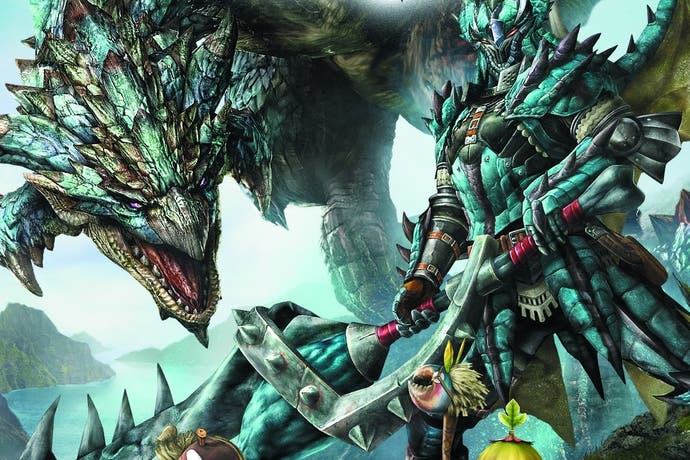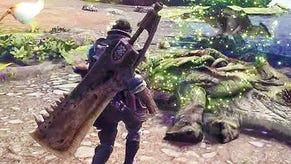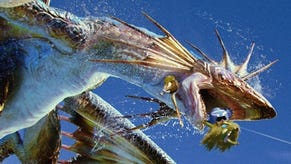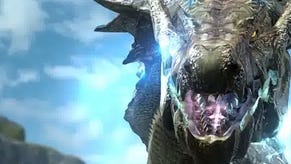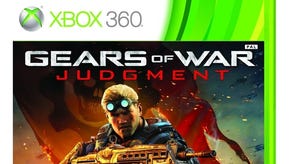Monster Hunter 3 Ultimate: Dat G-Rank
In the first of a short series of articles, Rich Stanton guides you round the world of Capcom's masterpiece. This week - what's in your pouch?
It's barely a month since the release of Monster Hunter 3 Ultimate in Europe, arguably the greatest game ever made. Say what? That's right ladies, and it's all about dat G-Rank; the license to hunt the very toughest monsters Capcom can devise, and the mark of a true hunter.
Eurogamer's review talks about the loops Monster Hunter 3 Ultimate uses to suck you in, and there are any number of beginner's guides elsewhere, but Dat G-Rank is going deep; exploring how and why small bits of Monster Hunter 3 Ultimate's systems work, and what a hunter ambitious for G-Rank should do about it.
Inventory management's a bit of a dirty phrase, because it is usually describing something boring - and this is, to be fair, because a lot of developers are awful at it. Look at Bethesda's games; simplistic systems based on 'realistic' item weights and great dull lists. Urgh!

Managing inventory is always a necessary evil, but a well-designed one feeds into the simple joy humans seem to find in sorting things. Monster Hunter's approach has multiple layers that come together beautifully; macro-management takes place in a box, accessible between hunts, which feeds into the micro-management of the hunter's pouch used in missions. Think of the pouch as Batman's utility belt, the items you take on each hunt, and the box as the Batcave's armoury.
Both layers look & work differently; the box is a series of grids where items are coded according to colour and symbol, eminently browseable and parseable, while the pouch is 24 items listed over three pages. Overfill your pouch and there'll be no room to pick up cool stuff while in the field - a restriction that toys with OCD impulses quite deliciously.
Monster Hunter's most brilliant inventory touch is how items are accessed during the hunt. New players often struggle with how the pouch is accessed by holding the left shoulder button and pressing the Y and X buttons - it does seem counter-intuitive at first. The reason is it allows for searching through the pouch while running, diving, and generally staying in the fight. Real-time pouch searching! This unique control design, the final step before an item's use, brings a long and intricate path of inventory management to a head in the game world - and, more importantly, means you can be sprinting away from a Black Diablos and simultaneously fumbling for the trap to bring him down.
Brilliant stuff - anyway, you want to know what to take in that pouch. This is how the real hunters roll.

Mega potions, whetstones - Duh. The former made from potions and honey, as if you didn't know.
Energy Drink - What, no steaks? Steaks are for chumps. Energy drinks can be made from two farmable items, are gulped quicker, and also add higher stamina regen for a time. Get those cats growing nitroshrooms and honey.
Dung bombs - Buy dung from the old lady, combine with bomb casings. An incredibly key item. Use to make unwanted monsters go away, force a wounded monster back into an area with a trap, or when pinned and taking damage.
Shock trap/pitfall trap - KEY DISTINCTION. Shock traps are endlessly replenishable, while pitfall traps are much harder to produce in bulk. Farm thunderbugs and combine with trap tools for the former, trade for the latter with the Argosy captain. Always make the first capture attempt with a shock trap, and you should keep a healthy stock of both.
Tranquiliser bombs - Essential for capturing. Buy tranquilizers and bomb casings, or make 'em just as easily, then combine. One quirk of tranqs is they have a timed effect of about a minute - so you can tranq a monster *before* trapping it rather than while it's in there.
Paintballs - Always have paintballs for marking monsters, because otherwise you'll regret it. Plus you can carry 99 in one slot - farm paintberries and sap plants, combine.
Mega pickaxe/mega bugnet - Some folk prefer to go on separate gathering missions. I gather in the lulls while hunting, because why not. Nothing worse than finding some juicy nodes in the volcano and leaving them be.
Hot Drinks/Cold Drinks - Always carry both, because otherwise you'll forget the right one too often. It's a utility belt, remember?

That loadout leaves exactly half the pouch for collecting stuff, and will do for 90 per cent of hunts. One of Monster Hunter's great pleasures is establishing your hunter in the game world to the extent that all of these items are feeding into the box automatically. Take the time to get familiar with the farm, the fishermen, and even the hunters for hire - all these little sides of the game that have no purpose other than to feed you items.
Do this because it's easy, it's a pleasure to manage, and it's satisfying to be ready for anything. No small praise for an inventory management system. Until next time, hunters, when we'll be talking armour sets, and the almost sexual pleasure of gem slots.
